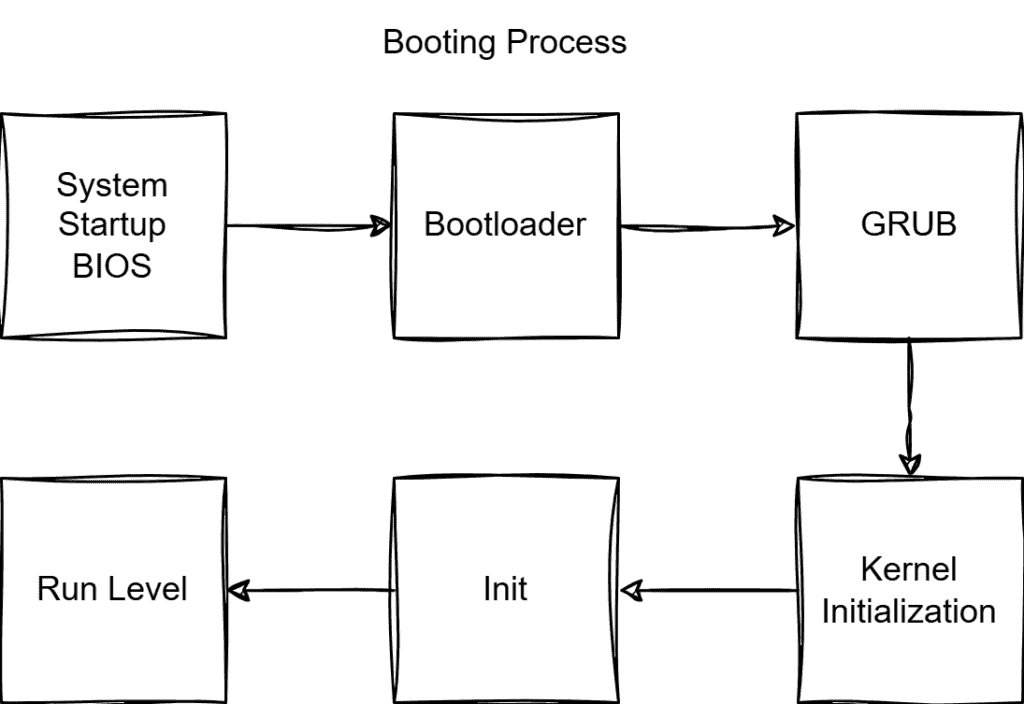1. Introduction
Booting is a fundamental process in computer science, referring to the sequence of steps a computer system takes to initialize and load its operating system after being powered on or reset. It is the first step in making a computer-usable, transforming it from a powered-off or dormant state into an operational one capable of running software and performing tasks.
Understanding booting is crucial for troubleshooting, optimizing performance, and enhancing system reliability.
In this tutorial, we’ll explore the mechanics, types, challenges, and significance of booting in modern computing.
2. Types of Booting
When a computer is powered on, it begins with no active software running. The booting process connects the hardware to the operating system, initializing components, checking for errors, and loading necessary software:

The booting process can be categorized into two main types: Cold Boot and Warm Boot. Both are essential for different scenarios and serve distinct purposes in ensuring a computer system operates correctly.
2.1. Cold Boot
A cold boot, also known as a hard boot, occurs when the computer is started from a completely powered-off state. This process begins when the power button is pressed, initiating the sequence that brings the system from an inert condition to a fully operational one.
The steps in a Cold Boot include the computer performing a Power-On Self-Test (POST) to check for hardware functionality and compatibility. Then, the firmware (BIOS/UEFI) initializes the hardware components. Lastly, the bootloader loads the operating system into memory, enabling user interaction.
2.2. Warm Boot
A warm boot, or soft boot, involves restarting a computer without fully powering it off. This is typically done through software commands, such as selecting “Restart” in the operating system, or by using specific key combinations.
Warm booting is faster than a cold boot because certain components, such as the power supply and hardware initialization routines, are bypassed or partially skipped. However, it does not fully reset the hardware, which can sometimes leave persistent issues unresolved.
2.3. Key Differences Between Cold and Warm Booting
Understanding the differences between these two types of booting is crucial for effective system management and troubleshooting:
Feature
Cold Boot
Warm Boot
Power State
Starts from a completely off state
Restarts without powering off
Hardware Reset
Fully resets hardware components
May not reset all hardware components
Speed
Slower due to complete initialization
Faster due to partial initialization
Common Use
First-time startup or after shutdown
Restart for updates or minor issues
3. The Booting Process
The booting process is a step-by-step sequence that a computer follows to transition from an inactive state to a fully operational system ready to execute user commands. This process bridges the gap between hardware initialization and operating system readiness.
3.1. Power-On Self-Test (POST)
When the computer is powered on, the first step is the Power-On Self-Test (POST). This diagnostic test is conducted by the system firmware (BIOS or UEFI) to ensure that critical hardware components, such as the CPU, RAM, and storage devices, are functioning correctly.
3.2. Initialization of BIOS/UEFI
After the POST is completed successfully, the firmware takes over. The Basic Input/Output System (BIOS) or its modern counterpart, Unified Extensible Firmware Interface (UEFI), initializes essential hardware components and prepares the system for loading the operating system.
3.3. Loading the Bootloader
The firmware identifies the bootloader, a small program responsible for loading the operating system into memory. This is typically stored in the bootable partition of the system’s primary storage device.
The bootloader’s location is determined based on the boot order configured in the firmware settings.
Common bootloaders include GRUB (GNU GRUB) for Linux systems and Windows Boot Manager for Windows systems.
3.4. Kernel Initialization
Once the bootloader is loaded, it passes control to the kernel, which is the core component of the operating system.
The kernel performs hardware abstraction to enable communication between hardware and software, and memory management to allocate resources efficiently.
3.5. Starting the Operating System
After the kernel is initialized, the operating system’s core processes are started. Therefore services and daemons (e.g., network management, logging services) are initialized. Also, the setting up of the graphical user interface (GUI) or command-line interface (CLI) takes place.
At this stage, the system is fully operational, allowing the user to log in and begin interacting with the computer.
4. Bootloaders
A bootloader is a critical program that bridges the gap between a computer’s firmware (BIOS/UEFI) and its operating system. It is responsible for loading the operating system into memory and handing over control to it, enabling the system to become fully operational. Without a functioning bootloader, the computer would not know how to start the operating system.
The booting process involves hardware, firmware, and software working together to prepare the system for use. Hardware components like the CPU, RAM, storage, and peripherals are initialized, while the power supply ensures they receive adequate energy. Firmware initializes the hardware, runs a POST check, and locates the bootloader, which loads the OS kernel to start the operating system.
Errors can disrupt booting, such as missing bootable partitions, corrupted bootloader files, faulty hardware, or damaged OS files. Troubleshooting includes adjusting BIOS/UEFI settings, repairing bootloader files, replacing defective components, or reinstalling the OS. Secure Boot errors may require reconfiguration. Proper maintenance and diagnostic tools help ensure a smooth boot process.
5. Conclusion
Booting is the critical process that brings a computer system to life, transitioning it from a powered-off state to an operational environment capable of running applications.
During this article, we delved into the components involved—hardware, firmware, and software—along with the types of booting. Additionally, we recognized common boot errors and their solutions help ensure reliability and efficiency in daily computing.